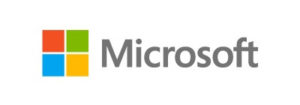Thursday and Friday, 1-2 November 2018
The data- and AI-driven REVENUE Conference and Idea Exchange
Microsoft’s London Headquarters
2 Kingdom St,
London W2 6BD, UK
The global conference is for media executives, strategists, product developers, revenue specialists and data executives who are seeking to earn revenue and expand audiences by leveraging data and artificial intelligence.
The 2-day event features a powerful format of general sessions with top-notch speakers, plus interactive, small-group breakout sessions called “huddles.” The objective is for participants to be inspired by discussions with fellow participants about strategies and best practices in data- and AI-driven revenue making at media companies.
These discussions are protected by Chatham House Rules, making the talks non-recordable and non-publishable. This environment enables and encourages everyone to speak openly.
Take-aways to expect from this data and artificial intelligence conference:
- Revenue strategies that deliver
- Business best practices driven by data and AI
- Why AI- and data-driven revenue strategies are a necessary approach for media companies’ future revenue-making
- How to develop and manage data- and AI KPIs
- Digital and print churn reduction using AI
- An inside look at fellow participants’ strategies and best practices
- Technology, tools and talent
- Driving loyalty and engagement
- Expanding audience depth and breadth
- Cost savings and efficiencies
- Overcoming competitive threats through culture change and a foundation in cognitive technologies
- How to build cross-functional teams to build AI- and data-driven products
9 a.m. to 5:00 p.m.
8th Data & AI For Media Conference
The data- and AI-driven REVENUE Conference and Idea Exchange
The global conference is for media and data practitioners who are seeking to earn revenue and expand audiences by leveraging data and artificial intelligence.
General Session:
9 a.m. to 9:30 a.m.
Session 1:
9:30 a.m. to 12:30 p.m.
The Art and Science of Data- and AI-Driven Advertising
The future belongs to targeted, data- and AI-driven advertising, as opposed to statically-placed display ads and one-size-fits-all display, native, pop-up, newsletter, and other digital advertising units. This session will leave participants with ammunition to improve their advertising strategy and the efficiency of their campaigns in targeting the right people, at the right time on the right digital channels. Participants will be inspired by effective, higher-profit advertising formats, will be inspired by potential partnerships, and will learn to drive more volume on a multitude of channels.
Take-aways to expect from the advertising session:
- Effective current and future advertising strategies
- Advertising targeting best practices
- Technologies, tools and talent needed for AI-driven advertising operations
- How to partner with other publishers to develop powerful, high-CPM business
- How to profitably target important groups, such as millennials, high-net worth individuals, parents and high discretionary income individuals
- How local and national media companies can dramatically drive more digital revenues through AI and data-driven techniques
- How strategies and leadership drive change, from digital to data centric media companies
- How to compete with the Google-Facebook duopoly, which already successfully implemented data- and AI-driven advertising practices, and own 70%+ of the digital ad market
9:30 a.m. to 10:00 a.m.
How MailOnline leverages 3.5 million users’ data for targeted advertising
London’s MailOnline, one of the world’s most popular news websites, leverages hundreds of points of data on more than 3.5 million users to create targeted ad campaigns on behalf of advertisers. The MailOnline does not have a paywall, therefore, their main source of revenue is advertising. Audience data and segmentation, powered by artificial intelligence, has driven higher revenue for the multi-media company. Lauren will discuss how the MailOnline leverages AI and machine learning to maximise ad revenue.
10:00 a.m. to 10:30 a.m.
Building a profitable, data-driven, multi-publisher ad alliance
The Pangaea Alliance: An advertising network of premium publishers creating data-driven advertising success. Fiona McKinnon, General Manager of the Pangaea Alliance, will discuss how CNN, the Guardian, Reuters, The Week, FastCompany, Inc. and other top UK publishing companies, have combined forces to offer its advertisers a high saturation of the UK’s top demographic target consumers for its platform. The result is a healthy bottom line for participating publishers.
10:30 a.m. to 11:00 a.m.
Networking break
11:00 a.m. to 11:30 a.m.
The Revenue Balancing Act: The formula for Mittmedia’s digital ad and reader revenue
In the quest for increased revenues, Mittmedia, a popular Swedish regional news publisher, has sought the perfect balance between digital subscription and digital advertising. A paywall reduces significantly the number of readers, which drives up the cost per thousand (CPM) viewers, only on a much smaller base. The perfect formula maximises revenue from the highest number of subscriptions and the maximum volume of high-priced ads. Govik will outline Mittmedia’s AI-driven advertising and subscription businesses, and the advertising-audience formula, and will give examples of Mittmedia’s paid audience growth, and leveraging the customers for high-value ad campaigns.
Panel discussion:
11:30 a.m. to 12:30 p.m.
The essential strategy and execution guide for AI- and data-driven advertising
12:30 p.m. to 1:00 p.m.
Session 2:
1:30 p.m. to 6 p.m.
The Power of Data- and AI-driven subscription sales
Audience data and sophisticated AI algorithms power the most successful and profitable media company subscriptions strategies. This session will explore the strategy and science behind digital subscriptions best practices around the world, including pricing, targeting, strategy, and what does and doesn’t trigger customers to pay for content.
Take-aways to expect from the subscriptions session:
- Effective current and future subscription strategies and best practices
- Technologies, tools and talent needed for AI-driven subscriptions operations
- Triggers that convert non-payers to subscribers
- Trends in what works, what doesn’t work
- How to predict churn in time to retain waning customers
- How to identify content that compels customers to want to pay
- How to design pricing schemes and registration processes
- How and why freemium, meter and hybrid systems work
- How audio and video will play a larger role in driving subscriptions
- How each subscription offer must be tailed for regional vs. national; and newspaper vs. magazine vs. online-only companies
1:30 p.m. to 2:00 p.m.
Trends in Data- and AI-Driven Subscription Models
Two major research operations have separately executed a deep dive into what makes the most successful digital subscription strategies tick. This session will give a broad overview of the best practices for revenue and audience growth through subscriptions.
1:30 p.m. to 1:50 p.m.
“News for Sale” author to discuss AI best practices in digital subscriptions
Piechota will recap the variety of trends about successful and failures in digital subscription strategies around the world, as excerpted from his latest report, “News for Sale. The Guide to Media Subscriptions” published by the Reuters Institute for the Study of Journalism at the University of Oxford. He will discuss the profound trends in data- and AI-driven strategies for digital news subscriptions, and will provide a glimpse into what AI transforming the industry with marketing automation in the subscription context.
1:50 p.m to 2:10 p.m.
2:10 p.m. to 2:30 p.m.
Question and Answer session with the researchers about the hows and whys of successful subscription and membership strategies.
Data & AI for Media participants will receive links to both reports after the conference. McCabe will present the insights about digital subscription, membership and other payment models around the world.
2:30 p.m. to 2:55 p.m.
The FT story: Susbcription, Habit Forming & Data
The Financial Times is one of the leading publishers worldwide in terms of digital subscription: 930,000 paid for customers, 75% of them are digital-only. Its unique metric to measure engagement, RFV, closely correlates between the strength of readers habit and renewal rates. Lahav will explain how RFV is used as a North Star that guides product development and drives growth.
2:55 p.m. to 3:15 p.m.
Networking coffee and tea break
3:15 p.m. to 3:40 p.m.
Schibsted, one of the largest publishers in Europe, leverages data to acquire and retain subscribers. Aftenposten, one of Schibsted’s largest titles, drives approximately 20% of its digital article sales through data on Facebook by pushing sponsored content to specific audience segments. The relevant articles entice users to explore the content and ultimately subscribe. Further, Schibsted leverages data to delight subscribers, by matching tailored content to specific segments both online and through newsletters. Schibsted has also moved from generic mass communication towards tailored user communication triggered by user behaviour and other data sources with success. Jacobsen will discuss the present and future best practices in order to hone Schibsted’s successful digital subscription strategy in order to attract and retain users.
3:40 p.m. to 4:05 p.m.
NZZ: Building a personalized, dynamic “paygate” in Switzerland
The Neue Zürcher Zeitung is a news media company based in Zurich that is currently implementing a cross-channel dynamic Paygate, which is based not only on machine learning but also on optimal product integration. Rouven Leuener will describe how the system operates to achieve a conversion rate far above the industry average and how cross-functional teams optimally complement machine learning.
4:05 p.m. to 4:45 p.m.
Panel discussion: What are the best practices in data- and AI-driven subscriptions and membership operations? Where does a company start to launch an audience revenue strategy? What are the resources required in people, technology and know-how?
4:45 p.m. to 5:45 p.m.
Breakout “Huddles”
Huddles are interactive, small-group breakout sessions, following sessions 1&2. The objectives are:
- Participants to be inspired by fellow conference delegates about strategies and best practices in data- and AI-driven revenue and audience expansion
- For participants to brief overview from the huddle leader and moderator
- For participants to share their own cases and to ask questions of fellow delegates
- 15-25 people per session. Participants choose sessions in advance, after registering for the conference. Participants are given choices 1, 2 and 3. Every effort is made to place in first choice. Participants will have at least three huddles to choose from for each session.
Each team will give a 5-minute overview of findings; Emcee will give a wrap-up for Day 1’s take-aways.
Chris Austin, Director of Data and Insight, Condé Nast International, London: “Best practices in audience insights for media companies.”
Robin Govik, Chief Digital Officer, Mittmedia, Sweden: “Balancing and growing digital ad and reader revenue.”
Rouven Leuener, Group Head of Digital Product, Neue Zürcher Zeitung, Switzerland: “Best practices in AI-driven paywalls”
Grzegorz Piechota, Senior Research Fellow, Oxford University Reuters Institute for the Study of Journalism, United Kingdom: “News for Sale: Best practices in data-driven reader revenue around the world.”
5:45 p.m. to 6:15 p.m.
Recap of Huddles and Wrap-up for Day 1
6:15 p.m. to 7:30 p.m.
Dinner on your own
8:30 a.m.
Coffee and team
Session 3:
9 a.m. to 12:00 p.m.
Data- and AI-Driven Cost Savings and Efficiencies
As media company staff sizes shrink, media companies are keen to find efficiencies and cost savings without sacrificing quality content. In this session, we will explore myriad examples of cost savings and efficiencies realized by AI- and data-driven operations, from automated content generation to leveraging predictive modeling to reduce print single-copy wastage.
Take-aways to expect from the Cost Savings and Efficiencies session:
- Effective AI-driven cost savings and efficiencies strategies and best practices
- How machine learning and predictive analytics technology tools create significant savings
- How text, audio and video automation create more content for a fraction of the cost of journalist-created content, freeing journalist to do more impactful stories
- What is blockchain, and how can it be leveraged for publishers
- How predictive modeling can save millions in wasted single-copy print magazine and newspaper at newsstands
- Imagining the future impact of efficiencies across the media organization, from the newsroom, to advertising, to logistics and beyond
- How robots can be used for customer service, reminder systems, news alerts and more
9:00 a.m. to 9:25 a.m.
Natalie will discuss how Microsoft is developing artificial intelligence technologies for Bing News. Her team’s work is a powerful story for media companies, as the results drive successful content engagement, targeted advertising and marketing best practices.
9:25 a.m. to 9:50 a.m.
How blockchain-powered Civil is creating a more efficient content distribution and monetisation [model]
Civil is the decentralized, blockchain-powered marketplace that aims to introduce a new, sustainable operating model for journalism. Civil’s model seeks to enable a more direct, transparent relationship between journalists and citizens, using blockchain to also strengthen protections for journalists against censorship and intellectual property violations. The goal of Civil is to create a sustainable, global marketplace for journalism that is free from manipulative ads, misinformation and outside influence. Mohan will discuss how journalist and newsrooms can engage in this new, efficient model of content distribution and monetisation.
9:50 a.m. to 10:15 a.m.
Automated real estate content generation drives efficiencies, subscriptions
Homeowners Bot is a BIGGIES Award-winning product from developer United Robots in Sweden. The automated content bot has driven waves of traffic and subscribers to its publisher partner Mittmedia, in Sweden. Karlsson will describe how the AI-powered automatic real estate listings text have created savings of personnel costs to manually input real estate content, and has driven significant subscriptions from hungry readers of local real estate content.
10:15 a.m. to 10:35 a.m.
Networking coffee and tea break
10:45 a.m. to 11:05 a.m.
Data as the BBC’s most important audience automation tool
With content that is consumed by 99% of UK households every week and an ambition to provide its content to 500 million people around the world, the BBC strives to put its audiences and audience data at the heart of everything it does. Throughout almost a century of existence, data has underpinned decision-making as well as programme and product development at the BBC. Piatkowska will outline how the organisation uses data and AI to expand and engage its massive audience, including its automated, AI-driven MyBBC personalisation product.
11:10 a.m. to 12:00 p.m.
Panel discussion: Leveraging data and AI to create money-saving, efficient processes
12:00 p.m. to 1:00 p.m.
Networking Lunch
Session 4:
1:00 p.m. to 5:30 p.m.
Data- and AI-driven audience and product expansion
Audience data is the foundation for media companies’ product development strategies. These data inform companies about their audience members’ engagement regarding content type, on specific platforms, at specific times and for varying lengths of time. These insights drive decisions about building products to engage a multitude of audiences, and gives media companies the ability to expand their audiences by adding fresh and exciting products.
Take-aways to expect from the Audience and product expansion session:
- Effective audience and product development strategies and best practices
- How audience data plus AI help inform audience and product development operations
- How experimentation is creating and honing news products for targeted audiences
- How ideation and Silicon Valley-style product development techniques create audience-expanding products efficiently and effectively
- How audience insights have shaped media companies budgets, targets and strategies
- New trends in product development, including audio and video products, which are transforming into new channels
- Customer-centric approaches to product development
- Explicitly and implicitly collected audience data, and how to exploit them
1:00 p.m. to 1:25 p.m.
CNN.com is advertising-driven business, with over 100 million unique visitors per month. It is the job of the data and insights team to ensure the audience numbers are stable and growing. “You live and die by the audience you drive. if you don’t ensure that the experience on your site is not engaging, you will fail,” Segal says, adding that the team ensures they are not relying on only social media and breaking news for traffic. Segal will discuss the variety of data-driven tools that bolster CNN’s audience numbers and engagement.
1:25 p.m. to 1:50 p.m.
How a new approach to content recommendation drives traffic and revenue
In the past, content recommendation generated revenue through ad clicks, but as publishers look to improve user loyalty and recent surveys show audiences reacting negatively to ad-powered widgets, what does the future hold? London-based Bibblio has transformed the recommendation model using ad-free AI-driven content suggestions. The software lets publishers show audiences their most engaging content, improving page views and revenue.
1:50 p.m. to 2:15 p.m.
Styria Media’s AI-driven classifieds marketplace product
Styria Media’s award-winning data department has produced a variety of AI-driven, revenue-making products, including their classified marketplace. The operation includes AI features such as the seller’s side object recognition for ad placement, and visual search for buyers, as well as a recommendation engine and personalisation based on NLP for news portals. Marko’s presentation will focus on classifieds monetisation using AI, as well as practical and strategic perspectives on data in media companies today.
2:15 p.m. to 2:45 p.m.
Networking coffee and tea break
2:45 p.m. to 3:30 p.m.
Panel discussion: The building blocks of our AI-driven product and audience development future
3:30 p.m. to 4:30 p.m.
4:30 p.m. to 5:00 p.m.
Recap of Huddles and Farewell
Data & AI for Media Week Partners:











































